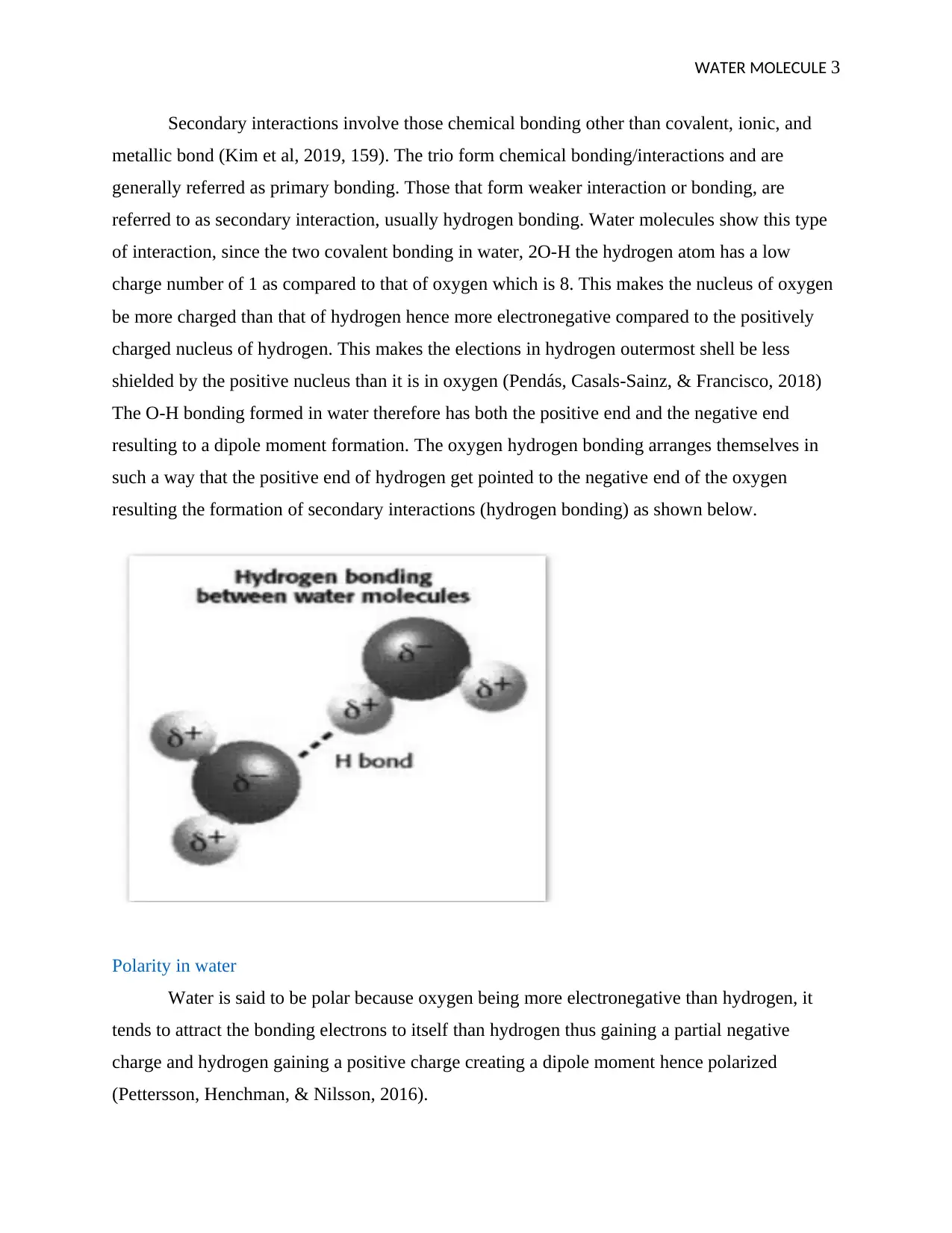Chemistry Report: Water Molecule, Structure, and Properties Analysis
VerifiedAdded on 2022/11/01
|5
|1076
|234
Report
AI Summary
This chemistry report provides a detailed analysis of the water molecule, focusing on its fundamental chemical and physical properties. The report begins with an introduction to water, emphasizing its importance and prevalence. It then delves into the concept of covalent bonding, explaining how it applies to the formation of water molecules, including the sharing of electrons between hydrogen and oxygen atoms. The report also explores secondary interactions, specifically hydrogen bonding, illustrating how the polarity of water molecules leads to these crucial interactions. Furthermore, the report examines the physical properties of water, such as its boiling point and conductivity, connecting these properties to its molecular structure and bonding characteristics. Finally, the report highlights other interesting facts about water, such as its anomalous expansion upon freezing, providing a comprehensive overview of this essential molecule. The report includes relevant diagrams and references to support its claims, adhering to the specified report structure and word count requirements.
1 out of 5












![[object Object]](/_next/static/media/star-bottom.7253800d.svg)